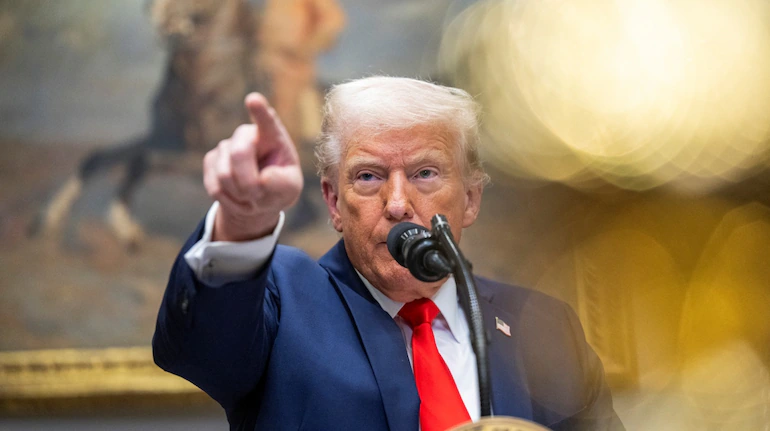Asia Responds to Trump's New Tariff Shake-Up as August Deadline Approaches
Asia Responds to Trump's New Tariff Shake-Up as August Deadline Approaches
By
David Goldfarb
Last updated:
August 1, 2025
First Published:
August 6, 2025

U.S. President Donald Trump has once again disrupted the global trade landscape — this time with a sharp update to his administration’s “reciprocal” tariff regime. Issued Thursday ahead of the August 1 deadline, the revised tariff order imposes an additional 10% duty on goods from countries not explicitly listed, and a staggering 40% tariff on transshipped goods aimed at bypassing original trade restrictions.
The White House has clarified that the newly recalibrated duties will officially take effect on August 7. However, Trump maintained a firm tone online, declaring, “THE AUGUST FIRST DEADLINE IS THE AUGUST FIRST DEADLINE — IT STANDS STRONG, AND WILL NOT BE EXTENDED. A BIG DAY FOR AMERICA!!!”
The executive order updates a previous directive from April and comes at a moment when global supply chains are still grappling with post-pandemic shifts, inflationary pressures, and geopolitical uncertainty. Here’s how key Asian economies are reacting to the rapidly changing U.S. trade policy.
Cambodia: Major Relief After Previous High Tariffs
New Tariff Rate: 19%
Previous Rate (April 2): 49%
Cambodia saw one of the most dramatic tariff reductions in the updated framework. Prime Minister Hun Manet, celebrating the decision in a Facebook post, called it “good news for the economy and citizens of Cambodia.”
The significant drop from nearly 50% comes after Cambodia was hit hard under the original “Liberation Day” tariffs, which placed its key textile and agricultural exports under considerable strain.
Manet also expressed gratitude to President Trump for mediating a recent border conflict with Thailand, suggesting a broader diplomatic thaw.
Thailand: A Balanced Tariff, with Plans to Cushion the Blow
New Tariff Rate: 19%
Previous Rate (April 2): 36%
Thailand’s Finance Minister Pichai Chunhavajira framed the new rate as a positive outcome of bilateral cooperation. “This reflects the close friendship and partnership between Thailand and the United States,” he wrote on X (formerly Twitter).
While the revised tariff is significantly lower, Chunhavajira acknowledged the strain on small businesses and farmers. He announced a series of “comprehensive support measures,” including tax relief, soft loans, and subsidies to stabilize the domestic economy.
Thailand remains a major U.S. trade partner in electronics, agriculture, and auto components. In 2024, Thai exports to the U.S. totaled $53.8 billion, according to data from the Thai Ministry of Commerce.
Taiwan: Tariffs Tied to Ongoing Negotiations
New Tariff Rate: 20% (temporary)
Previous Rate (April 2): 32%
Taiwanese President Lai Ching-te shared that the new rate is temporary and may be lowered further if negotiations with the U.S. succeed. The government is actively discussing Section 232 implications — the clause under which the U.S. imposes tariffs on national security grounds — and exploring avenues for supply chain collaboration with American tech firms.
Taiwan’s semiconductor-heavy exports made up over $92 billion in shipments to the U.S. in 2024, and any disruptions here could have wide-reaching effects on electronics supply chains globally.
Malaysia: Reassurance Amid Reduced Rates
New Tariff Rate: 19%
Previous Rate (July Letter): 25%
Malaysian Prime Minister Anwar Ibrahim told Parliament that the new tariff rate, effective August 7, will be “easier on the economy” and aligned with Malaysia’s national interest. He also confirmed President Trump’s upcoming attendance at the 47th ASEAN Summit in October — a significant gesture, given Trump only attended one such meeting in his first term.
Malaysia’s economy remains export-driven, with the U.S. accounting for nearly $40 billion in annual trade. Anwar also emphasized that continued dialogue is underway to ensure future tariff revisions are even more favorable.
Japan: Auto Industry Relief and Stability Promised
New Tariff Rate: 15%
Previous Rate (April 2): 25%
Japan, Asia’s second-largest economy, struck a deal ahead of Thursday’s announcement that helped slash tariffs across the board — particularly benefiting its automotive sector, which employs over 5.5 million people and exports billions to the U.S. annually.
Chief Cabinet Secretary Yoshimasa Hayashi emphasized that the reduction will “reduce uncertainty regarding U.S. trade policy” and boost global economic stability.
Japan’s trade ministry said it would continue pushing for further tariff reduction and reaffirmed its support for small and medium enterprises affected by the policy shift.
India: Holding Firm, But Open to Negotiation
New Tariff Rate: 25% (unchanged)
India did not secure a reduction in the revised tariff plan and continues to face a 25% duty on its exports to the U.S.
In a speech to Parliament, Commerce and Industry Minister Piyush Goyal reassured lawmakers that the government is actively negotiating a bilateral trade agreement targeted for completion by October–November 2025.
India remains cautious, with officials emphasizing the need to protect domestic industries, particularly agriculture and small enterprises. The government is preparing a defense framework that includes tariff-neutralizing export incentives, aimed at keeping Indian goods competitive.
India exported $78.6 billion worth of goods to the U.S. in 2024, making the country a crucial player in the ongoing trade recalibration.
Final Outlook: Tensions, Adjustments, and Uncertainty Ahead
Trump’s tariff restructuring signals a broader attempt to redefine trade under his “America First” strategy. While some nations have welcomed revised rates, others are preparing contingency measures to mitigate economic fallout.
The long-term impact of these tariffs will depend on how the U.S. and Asian countries navigate trade talks in the coming months. As the August 7 implementation date nears, investors and policymakers alike will be watching for both economic disruptions and diplomatic breakthroughs.
For now, Asia’s reactions reflect a mix of cautious optimism, strategic adaptation, and calculated resilience in the face of one of the most aggressive tariff shifts in recent years.
Popular articles
Subscribe to unlock premium content
Disney’s Timeless Magic and How the Entertainment Giant Continues to Shape Culture and Innovation

Imran Khan’s Economic Missteps Amid Political Chaos in Pakistan

The Philippines’ Digital Shift How Remittances and BPO Are Fueling Growth

Disney’s Timeless Magic and How the Entertainment Giant Continues to Shape Culture and Innovation

Imran Khan’s Economic Missteps Amid Political Chaos in Pakistan

Disney’s Timeless Magic and How the Entertainment Giant Continues to Shape Culture and Innovation









